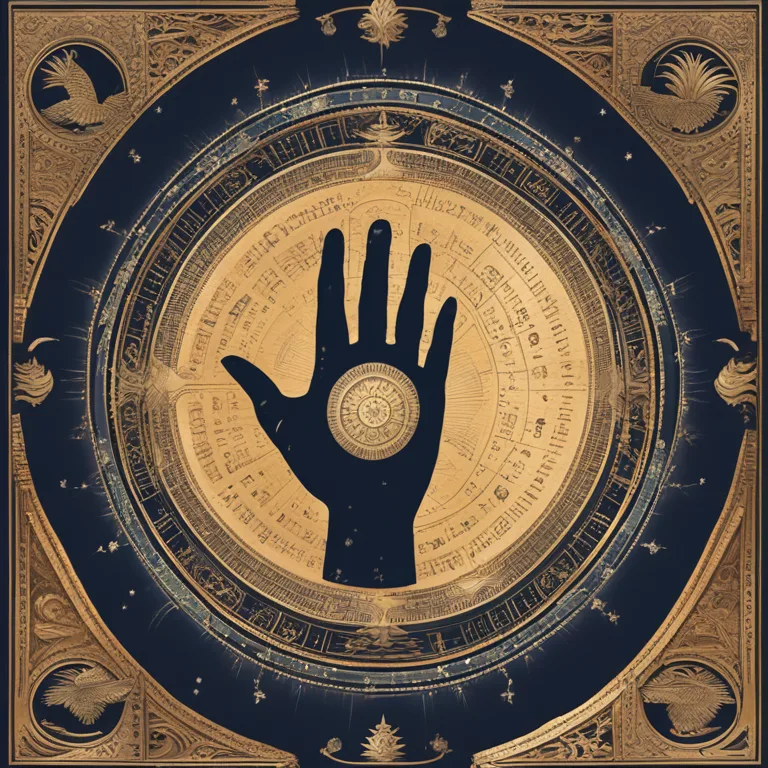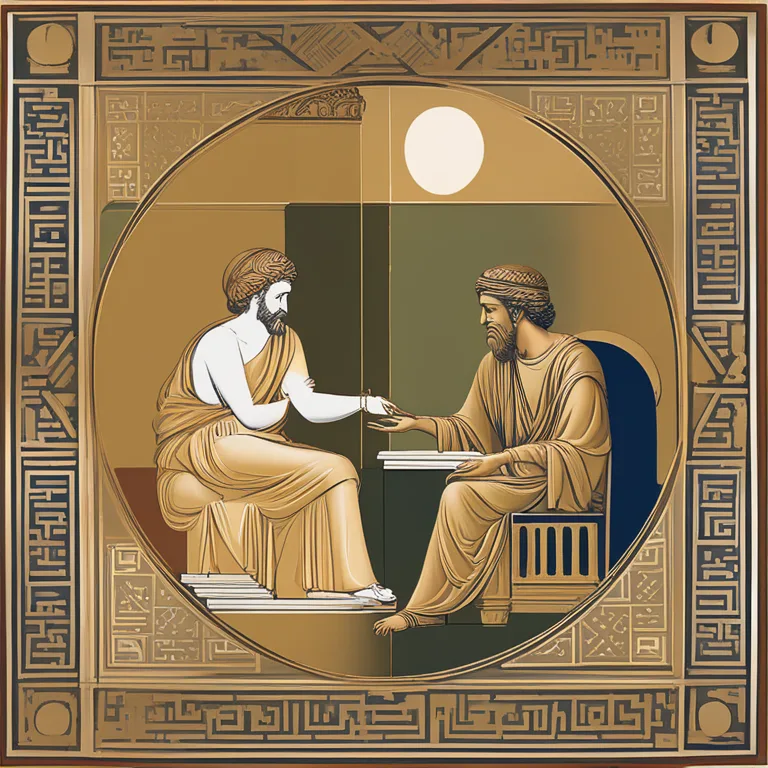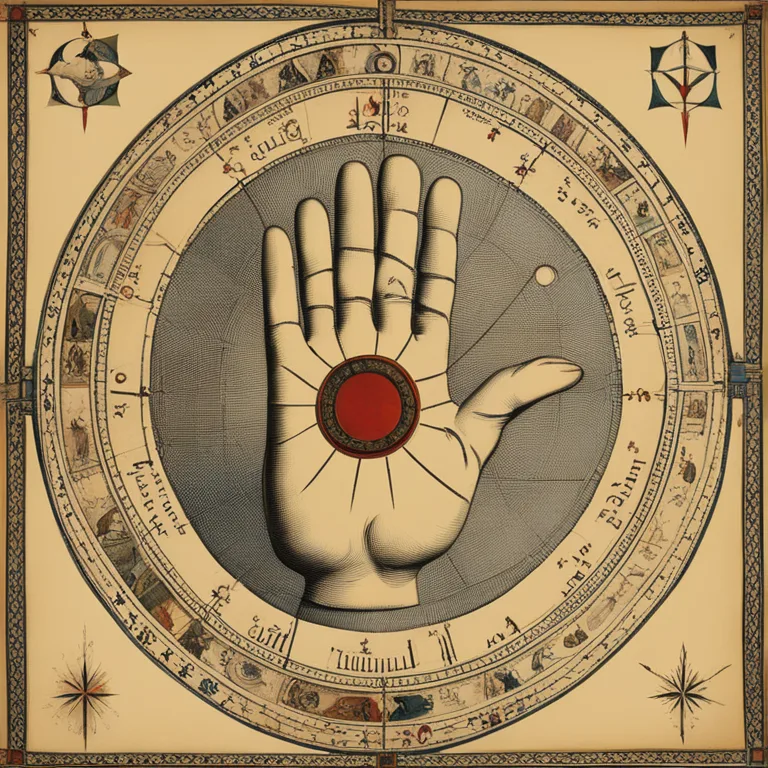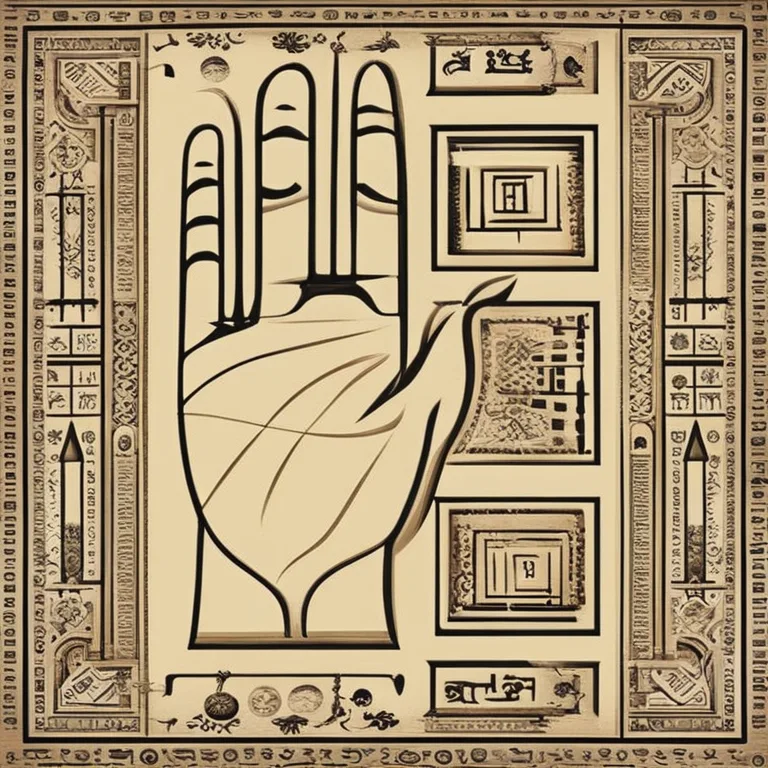
Tracing The Historical Roots Of Palmistry
Discover the mysterious beginnings of palmistry and its journey through time as a practice of divination and character analysis.
article by Nora Pennington
The Ancient Practice of Palmistry
Palmistry, or chiromancy, is the intriguing art of interpreting the lines and features of the hand to gain insights into an individual's personality and potential future events. While the precise origins of palmistry are shrouded in the mists of history, many believe that this practice began in ancient India. From there, it is thought to have spread to China, Tibet, Persia, Egypt, and Greece, weaving its way through the fabric of various cultures and philosophies. As a testament to human curiosity, palmistry has become a continuous strand in the tapestry of esoteric traditions that span across time and geography.

Connection to Ancient Civilizations
In ancient India, the art of palmistry was closely associated with Hindu astrology, known as Jyotisha. References to palmistry can be found in the sacred scriptures of the Vedic texts, which underscores its reverence in the spiritual canon. Similarly, in ancient China, palm readings were integrated with the broader scope of Chinese astrology and were thought to reflect the principles of yin and yang, as well as the five elements. Historical evidence suggests that ancient Egyptians and Mesopotamians were also engaged in the practice, linking palmistry's lineage to some of the world's earliest civilizations.

Greek Philosophers and Palmistry
The spread of palmistry to the West is often attributed to the Greek philosopher Anaxagoras, who shared the knowledge with other Greek scholars, including Aristotle. Aristotle took a keen interest in the study, and upon discovering a treatise on the subject, he presented it to his student, Alexander the Great. Alexander, renowned for his quest for knowledge, supposedly used palmistry to examine the character of his officers and toward the strategy of assessing the personalities of his adversaries. This historical narrative points to the way palmistry was viewed not only as a mystical art but also as an analytical tool.

The Middle Ages and Beyond
During the Middle Ages, palmistry faced a challenging period as the practice was suppressed and, at times, persecuted, especially in Europe where it was associated with witchcraft. However, it survived, primarily owing to the efforts of traveling Romani people, who continued to practice and share it as they moved across continents. Palmistry experienced a renaissance during the 19th century, particularly in Western countries, as part of a broader resurgence of interest in the occult and esoteric wisdom. Figures like Captain Casimir Stanislas D'Arpentigny and William John Warner, also known as Cheiro, played significant roles in modernizing palmistry and bringing it to a more mainstream audience.

Contemporary Palmistry
In our modern era, palmistry has adapted and flourished, incorporating psychological aspects and embracing new cultural influences. The digital age has also welcomed palmistry onto online platforms, with websites and mobile applications providing palm readings to people across the globe. Advances in technology may even reveal hitherto unknown aspects of this ancient practice, connecting it with scientific research into genetics and personal health markers. Despite skepticism from some quarters, palmistry continues to be a popular and fascinating field, attracting those who seek personal insight and a touch of mystique in their lives.
Published: 1/3/2024
Modified: 1/3/2024
More predictions
Come back here soon to learn more about yourself and your future


Palmistry Clues to Predicting Parenthood
Delve into the palmistry lines associated with predicting childbirth and learn what your hands may reveal about future family life.


The Origins of Palmistry: An Ancient Practice
Delve into the fascinating beginnings of palmistry—the ancient art of hand reading for insights into character and destiny.


Palmistry Insights on Love: Counting Your Relationships
Discover what palmistry reveals about your romantic journey. This article shares insights on interpreting your palm lines for potential relationships.